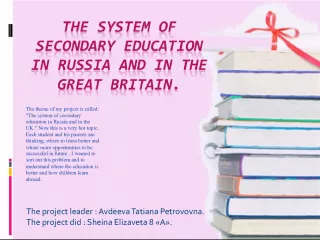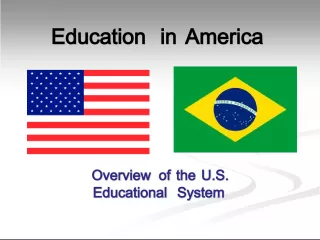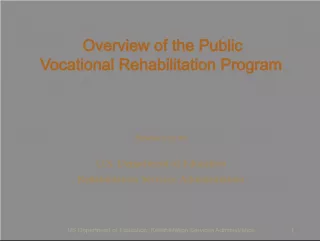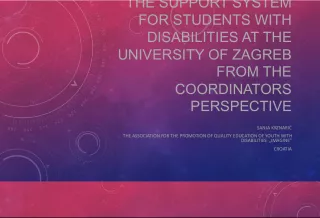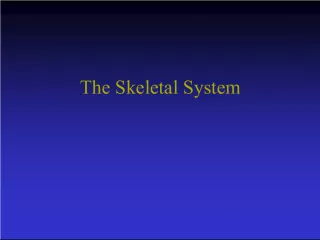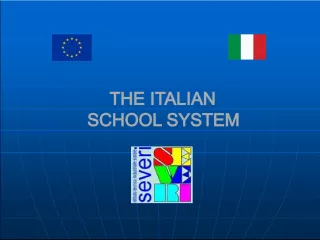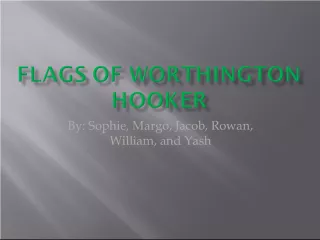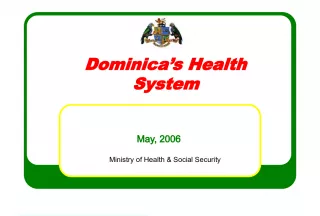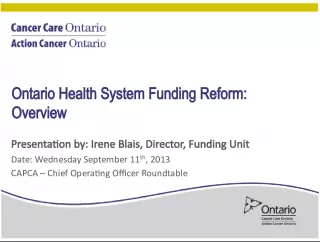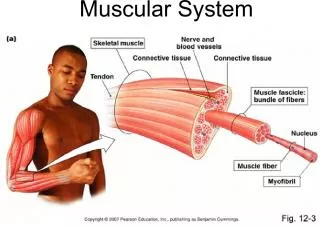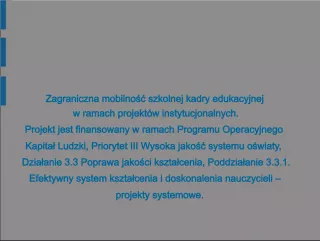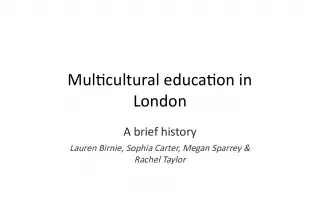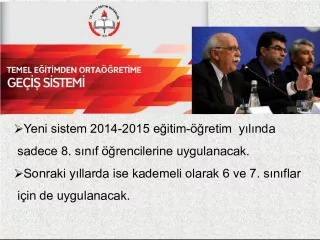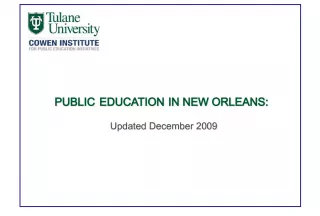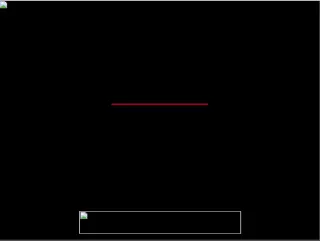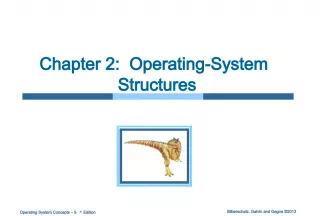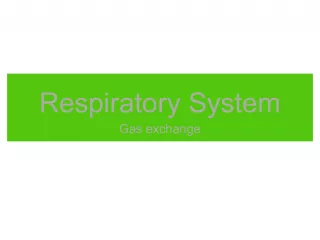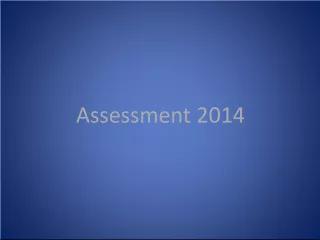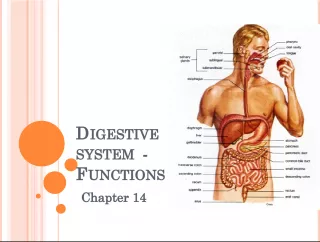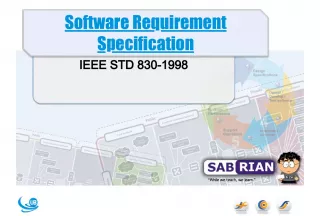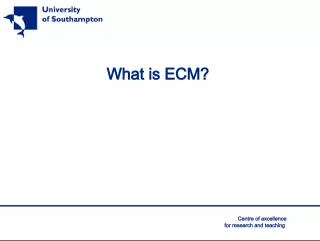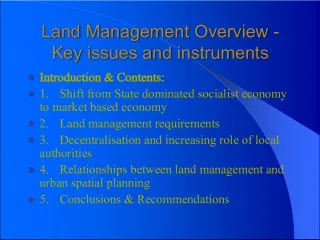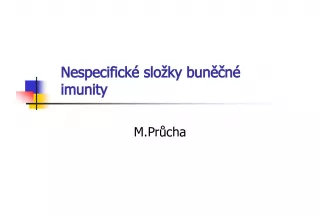Education System in Russia: An Overview
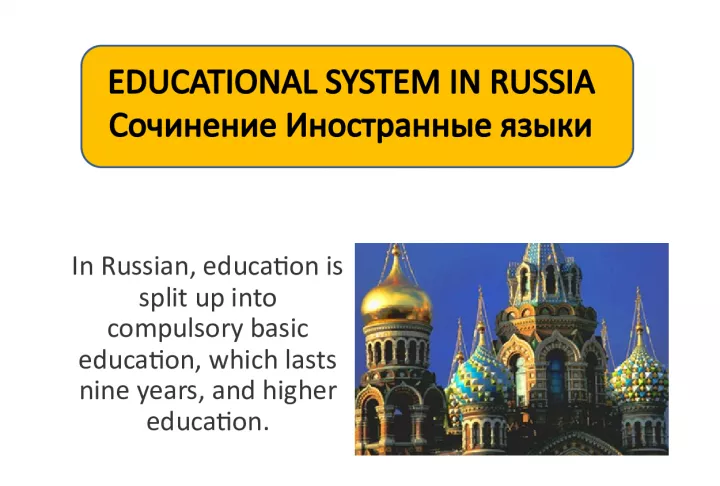

This article provides a summary of the educational system in Russia, including compulsory basic education and higher education. It also covers the regulation of education by the federal Ministry of Education and regional authorities, as well as the role of private institutions.
- Uploaded on | 11 Views
-
 zionhermann
zionhermann
About Education System in Russia: An Overview
PowerPoint presentation about 'Education System in Russia: An Overview'. This presentation describes the topic on This article provides a summary of the educational system in Russia, including compulsory basic education and higher education. It also covers the regulation of education by the federal Ministry of Education and regional authorities, as well as the role of private institutions.. The key topics included in this slideshow are Russia, education system, compulsory education, higher education, Ministry of Education, private institutions,. Download this presentation absolutely free.
Presentation Transcript
1. EDUCATIONAL SYSTEM IN RUSSIA In Russian, education is split up into compulsory basic education, which lasts nine years, and higher education.
5. Education in Russia is provided predominantly by the state and is regulated by the federal Ministry of Education. Regional authorities regulate education within their jurisdictions within the prevailing framework of federal laws.
6. Private institutions account for 1% of pre-school enrollment, 0.5% of elementary school enrollment and 17% of university-level students.
7. In September 2007 Russia upgraded its compulsory education standard from nine to eleven years. Education in state-owned secondary schools is free; first tertiary (university level) education is free with reservations: a substantial share of students is enrolled for full pay.
8. The literacy rate in Russia, according to the 2002 census, is 99.4%. 16.0% of population over 15 years of age have tertiary (undergradute level or higher) education; 47.7% have completed secondary education (10 or 11 years); 26.5% have completed middle school (8 or 9 years) and 8.1% have elementary education.
9. According to the 2002 census, 68% of children (78% urban and 47% rural) aged 5 are enrolled in kindergartens. According to UNESCO data, enrollment in any kind of pre-school program increased from 67% in 1999 to 84% in 2005.
10. The stages of compulsory schooling in Russia are: primary education for ages 6-7 to 9-10 inclusive; and senior school for ages 10-11 to 12-13 inclusive, and senior school for ages 13-14 to 14-15 inclusive. If a pupil of secondary school wishes to go on in higher education, he or she must stay at school for two more years. Primary and secondary school together comprise 11 years of study.
11. Eleven-year secondary education in Russian is compulsory since September 1, 2007. The eleven-year school term is split into elementary (grades 1-4), middle (grades 5-9) and senior (grades 10-11) classes.
12. Children are accepted to first grade at the age of 6 or 7, depending on individual development of each child.
13. Children of elementary classes are normally separated from other classes within their own floor of a school building. They are taught, ideally, by a single teacher through all four elementary grades (except for physical training and, if available, foreign languages); 98.5% of elementary school teachers are women.
14. Pupil-to-teacher ratio (11:1) is on par with developed European countries. The school year extends from September 1 to end of May and is divided into four terms. Study program in schools is fixed; unlike in some Western countries, schoolchildren or their parents have no choice of study subjects.
15. Vocational training option Upon completion of a nine-year program the student has a choice of either completing the remaining two years at normal school, or of a transfer to a specialized professional training school .
16. All certificates of secondary education regardless of issuing institution, conform to the same state standard and are considered, at least by law, to be fully equivalent. After finishing the 11th form of a secondary school, a lyceum or a gymnasium one can go into higher education.
17. Traditionally, the universities and institutes conducted their own admissions tests regardless of the applicants' school record. In 2003 the Ministry of Education launched the Unified state examination (USE) program
18. The set of standardized tests for high school graduates, issued uniformly throughout the country and rated independent of the student's schoolmasters, akin to North American SAT , was supposed to replace entrance exams to state universities.
19. The first nation-wide USE session covering all regions of Russia was held in the summer of 2008.
20. Tertiary (university level) education Russia, as of 20072008 academic year, has 8.1 million students enrolled in all forms of tertiary education (including military and police institutions and postgraduate studies).
21. Higher education institution, that is institutes or universities, offer a 5- years programme of academic subjects for undergraduates in a variety of fields, as well as a graduate course and writes a thesis, he or she receives a candidates degree or a doctoral degree.
22. The trend for consolidation began in 2006 when state universities and colleges of Rostov-on-Don, Taganrog and other southern towns were merged into Southern Federal University , based in Rostov-on-Don; a similar conglomerate was formed in Krasnoyarsk as Siberian Federal University ; the third one is likely to emerge in Vladivostok as Pacific Federal University . Moscow State University and Saint Petersburg State University acquired the federal university status in 2007 without further organizational changes.
23. Post-graduate levels The system makes a distinction between scientific degrees , evidencing personal postgraduate achievement in scientific research, and related but separate academic titles , evidencing personal achievement in university- level education.
